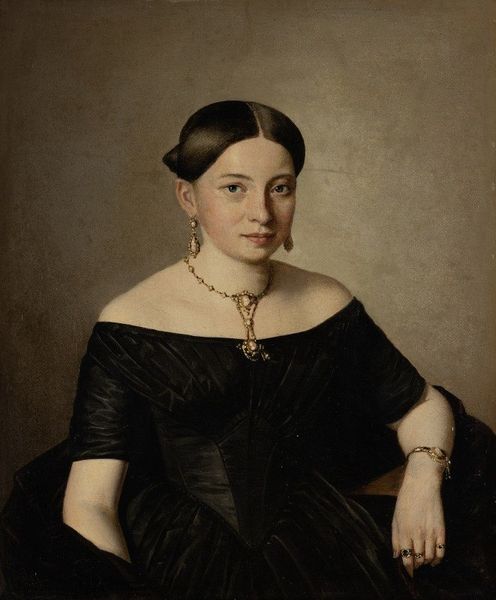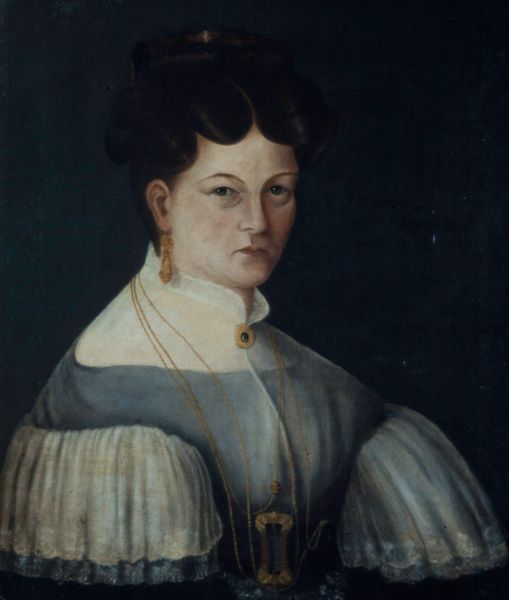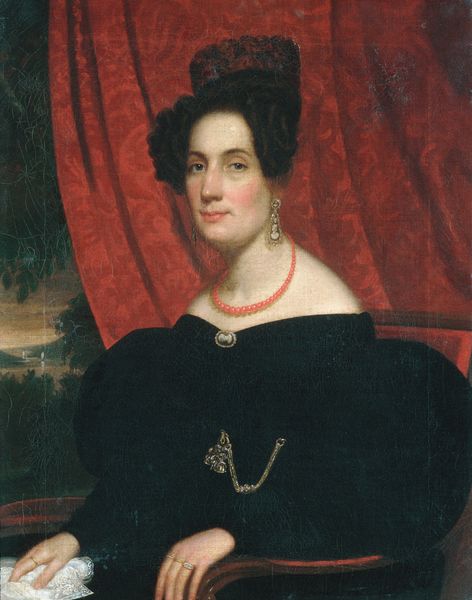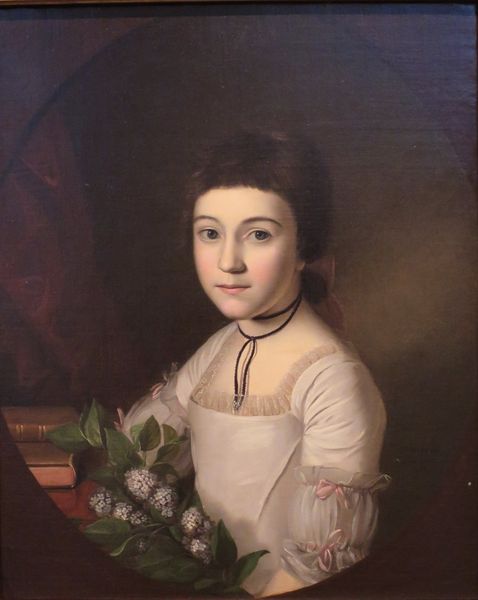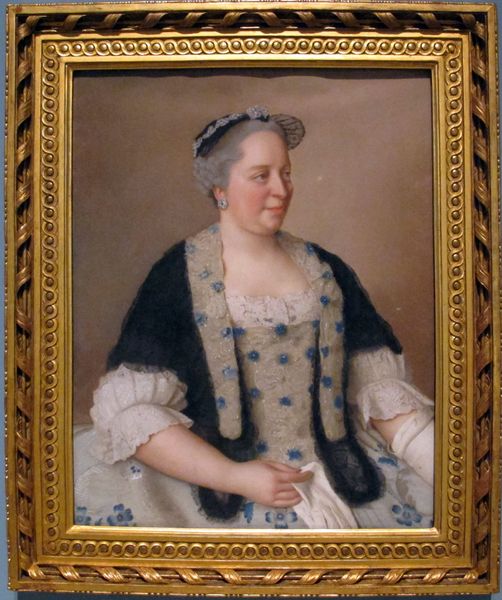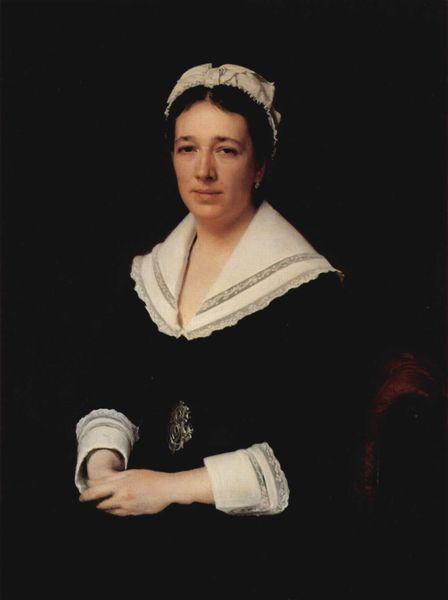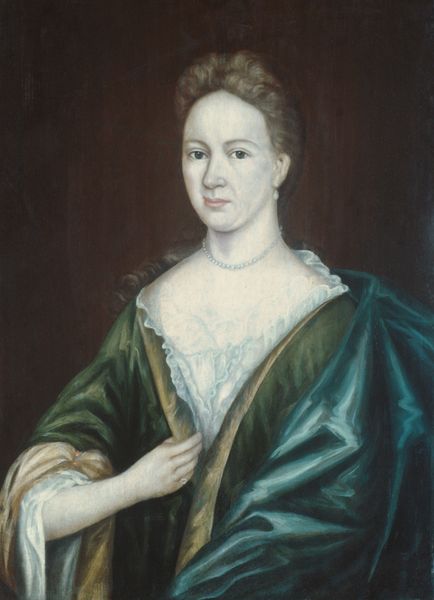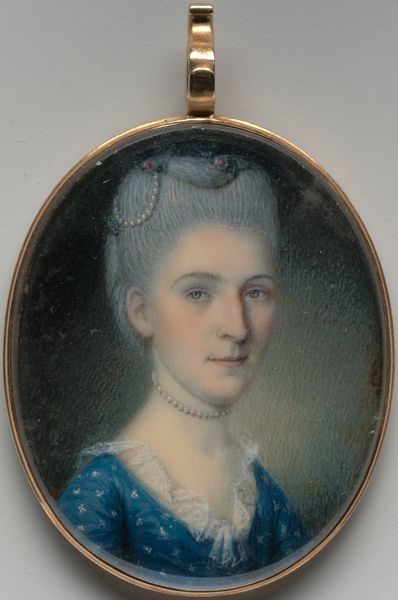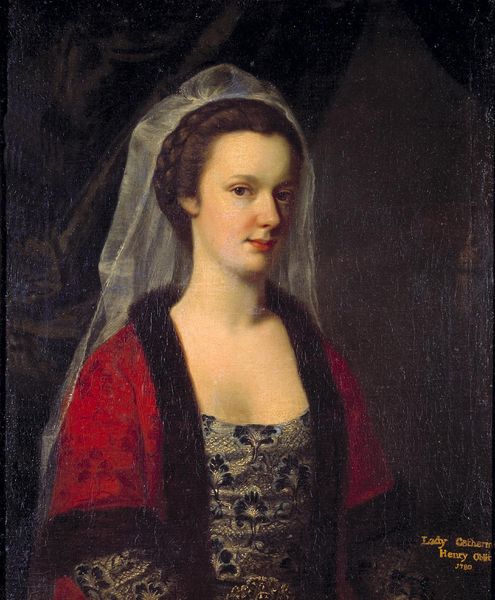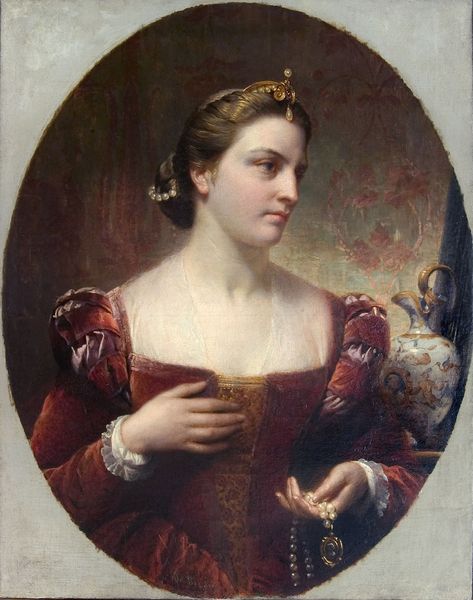
painting, oil-paint
#
portrait
#
painting
#
oil-paint
#
oil painting
#
academic-art
#
realism
Copyright: Public domain
Curator: Here we have Joan Brull’s "Portrait of Margalida Llambías Adrover," created in 1883. Brull was a key figure in Catalan modernism, deeply influenced by the academic style prevalent at the time. Editor: It's a captivating portrait, isn’t it? I'm immediately struck by the textural contrast between the dark, almost velvety dress and the delicate lace framing her face. You can almost feel the difference. Curator: Indeed, the details reflect a certain societal positioning. Portraiture of this nature was frequently commissioned by the burgeoning middle class, signaling social status. This portrait is really in the tradition of academic realism. Editor: You see that manifested in the materiality as well. Oil on canvas, allowing for that incredible detail. It also emphasizes consumption and class. Consider the labor invested in producing both the paint and the clothing depicted – everything speaks to a culture of careful crafting, designed to last. Curator: Absolutely. And while technically skillful, the portrait operates within certain conventions. Brull had to meet the expectations of the patron, reinforcing accepted norms of representation, although he seems to give his subject a sense of dignity and grace. Editor: Yet I see an underlying simplicity. Despite the intricate work involved, there’s an earthy quality in the color palette. Those muted browns and blacks – they feel deliberate. How does this piece fit into the wider political imagery in Catalan society at this moment? Curator: That’s the real question! As Catalan identity solidified and looked for its space in a quickly modernizing Spain, artworks that idealized tradition and domesticity grew in appeal, so the act of painting her like this takes on even more significance. Editor: Precisely, It's about how meaning is constructed through materials and labor – not just in the making, but also the wearing, the displaying, and the seeing. Curator: By studying art through social history, as well as an eye for process, the piece unfolds more broadly, providing us a portrait not just of Margalida, but Catalan society during the late 19th Century. Editor: And to think, it all starts with observing a finely woven piece of lace and layers of paint!
Comments
No comments
Be the first to comment and join the conversation on the ultimate creative platform.
